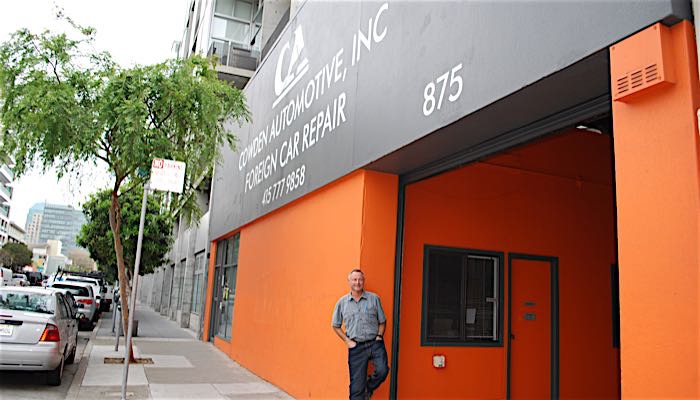The Tire Industry Association (TIA) recently announced that the National Highway Traffic Safety Administration (NHTSA) has responded to a letter written earlier this year regarding questions related to the servicing of tire pressure monitoring systems (TPMS). The letter outlines four different TPMS scenarios that tire retailers regularly face and how the “make inoperative” provision of the Motor Vehicle Safety Act (49 USC 30122(b)) applies to each situation. The provision “prohibits manufacturers, distributors, dealers, or motor vehicle repair businesses from knowingly making inoperative, in whole or in part, any part of a device or element of design installed on or in a motor vehicle in compliance with an applicable motor vehicle safety standard.”
In the first scenario, TIA asked if a retailer can replace an inoperative TPMS valve stem sensor with a standard rubber snap-in valve stem and still comply with the “make inoperative” provision. NHTSA’s response was that as long as the TPMS part was inoperative before the customer brings the vehicle to the repair business, “a motor vehicle repair business would not be violating 49 USC 30122(b) by removing an inoperative or damaged TPMS sensor and replacing it with a standard snap-in rubber valve stem…However, a motor vehicle repair business that goes on to make any other element of the TPMS system inoperative, for example, by disabling the malfunction indicator lamp, would violate the “make inoperative” provision.”
“This is exactly why our training programs have always stressed the importance of checking the status of the TPMS prior to service,” said Kevin Rohlwing, TIA Senior Vice President of Training. “If a valve stem sensor is not functioning prior to servicing the tires and wheels, then the retailer cannot violate the “make inoperative” provision because the system was already inoperative. This increases the importance of documenting an inoperable TPMS prior to any work being performed on the vehicle, especially now that the batteries in the sensors are starting to die.”
The second scenario focused on the purchase of aftermarket winter tires and wheels and the customer’s refusal to purchase new TPMS sensors or pay for the labor to transfer the original sensors to the aftermarket wheels. NHTSA responded that if the TPMS is functioning at the time of the aftermarket tire and wheel purchase, “a service provider would violate the “make inoperative” prohibition of 49 USC 30122(b) by installing new tires and wheels that do not have a functioning TPMS system. To avoid a “make inoperative” violation, the service provider would need to decline to install the new tires and rims, use the TPMS sensors from the original wheels (if they are compatible), or convince the motorist to purchase new TPMS sensors and ensure that the sensors are properly integrated with the vehicle’s TPMS system.”
“We are admittedly surprised by NHTSA’s response that aftermarket tire and wheels must include TPMS sensors,” remarked Roy Littlefield, TIA Executive Vice President. “Based on the language in the April 2005 Final Rule, we believed that the presence of the malfunction indicator lamp (MIL) would notify the driver that the TPMS was not operable as a result of their decision to decline new sensors or pay for the additional labor to install the original sensors in the aftermarket tire and wheel assemblies. While we have some genuine concerns regarding consumer backlash, it is clear that the Federal government is requiring retailers to make sure the TPMS continues to function following the purchase of aftermarket tires and wheels.”
In the third scenario, TIA asked if a service provider violates the “make inoperative” provision if they inadvertently break a non-defective sensor and are unable to locate an immediate replacement but allow the vehicle to return to service because arrangements were made to obtain and install the replacement part at a future date. NHTSA’s response was, “as a general matter, a violation of the “make inoperative” prohibition does not occur until a repair business allows or intends a vehicle to be returned to use…this would be true regardless of whether arrangements have been made for future repair.”
“While there will be some debate over the circumstances related to inadvertent damage, there are no questions regarding the release of the vehicle,” said Rohlwing. “If the actions of the service provider made a functioning TPMS inoperable, then it cannot be returned to service until the problem is solved.”
The fourth and final scenario describes a situation where a vehicle is released to the consumer without an illuminated MIL and then it illuminates after the vehicle has been driven. According to NHTSA, “The mere illumination of the malfunction indicator lamp after the vehicle has been released by a motor vehicle repair business to the driver would not itself be a violation of the “make inoperative” provision.”
“Based on NHTSA’s response, we are advising tire retailers to document the status of the TPMS before and after any tire or wheel service,” concluded Rohlwing. “If the electronic TPMS relearn or diagnostic tool includes the functionality to produce a print-out on the status of the system, we recommend that retailers give a copy to the consumer and retain a copy for their own records following service.”
A copy of the letter is available on the Association’s website, www.tireindustry.org. Retailers with questions, concerns or comments regarding the NHTSA TPMS letter can send an email to [email protected].
About TIA:
The Tire Industry Association, with a 90 year history representing all segments of the national and international tire industry, is the leading advocate, as well as, instructor in technical training of tire service technicians. For more information, visit www.tireindustry.org or call 800-876-8372.

